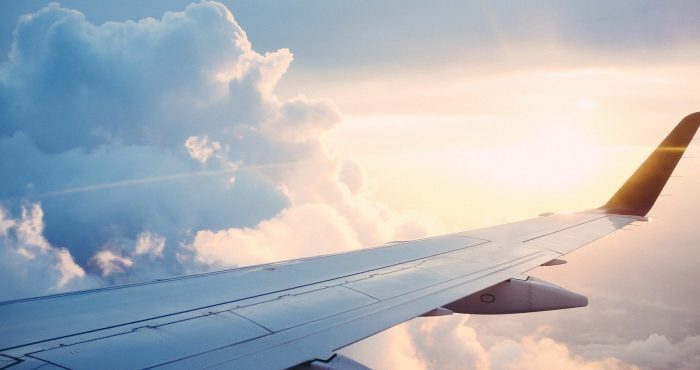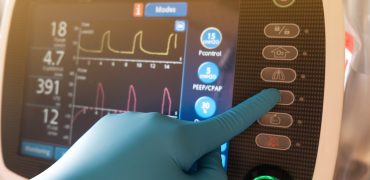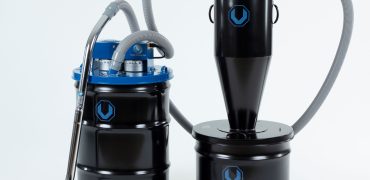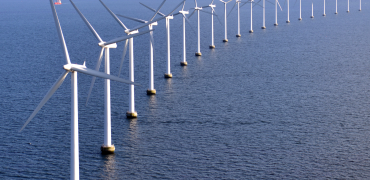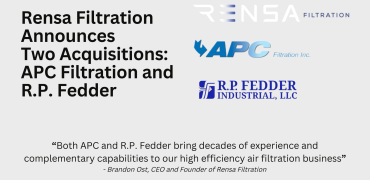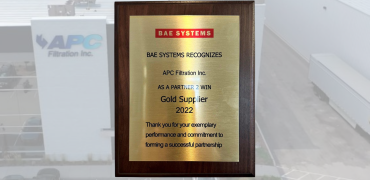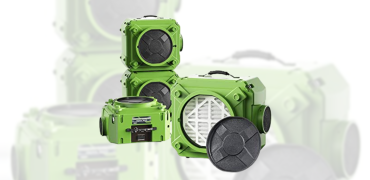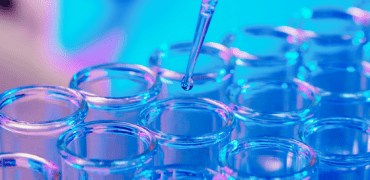Have you ever heard of “aerotoxic syndrome”? It’s a pseudoscientific medical term that was coined around the year 2000. It emerged because some people claimed to have health problems as a result of breathing poorly filtered air in aircraft cabins. Fortunately, the myth of aerotoxic syndrome was medically debunked in 2013. Any perceived symptoms of this alleged syndrome cannot be explained by science.
At the same time, the fears that fueled belief in aerotoxic syndrome are both real and reasonable. After all, passenger aircraft cabins are enclosed spaces that often contain many pathogens. Every time a passenger coughs or sneezes, millions of micro-organisms are released into the surrounding air. Also, irritants and allergens (such as pollen and microscopic dust) could potentially contaminate cabin air and cause discomfort.
Despite the presence of these potential contaminates, aircraft passengers have no reason to worry because state-of-the-art air filters have been engineered for the aerospace industry.
What’s Special About Aerospace Air Filters?
Aircraft cabin air is just as clean as hospital air. In both cases, the air is cleaner than the air you’d usually breathe in a school, office, or restaurant. That’s because both hospitals and airplanes use the same air filtration technology.
That technology is called High-Efficiency Particulate Air (HEPA) filtration. HEPA filters are regulated to trap at least 99.97 percent of particles that are 0.3 microns in diameter. To put that in perspective, a typical human hair is between 50 and 150 microns in diameter. So, this filtration is happening on a precise, microscopic scale.
Standard Filters vs. HEPA Filters
Standard air filters work like a mesh sieve, capturing particles that are too large for the holes in the filter media. HEPA filters are completely different. Structured as a mat of dense glass fibers, HEPA filters use three processes simultaneously to capture particles of various sizes.
- Impact works for the largest particles. As soon as they reach the filter, they get caught in the fibers.
- Interception works for medium-sized particles. It happens when a particle, following the flow of the air, comes within very close range of fiber within the filter. The particle is pushed into the fiber with no way out as the air continues to move through the filter.
- Diffusion works for very small particles, harnessing Brownian (chaotic) motion. Essentially, small particles tend to wander randomly through the filter, and they end up sticking to the fibers as they do so. The smaller these sub-micronic particles, the more erratic their motion and the more likely they are to be captured.
Together, these three processes allow HEPA filters to catch particles that are both larger and smaller than a certain target size. Interestingly, HEPA filters actually become more efficient the dirtier they get. That’s how they can handle a large passenger load on a commercial craft.
Although it’s been refined over time, HEPA filtration technology isn’t new. Their development dates back to World War II when Manhattan Project scientists created the first HEPA filter to capture radioactive particles. HEPA certification was then standardized in 1983. A few years later, we started manufacturing HEPA filters here at APC.
Why are Custom Filters Necessary?
Particularly in the aerospace, laboratory research, and defense industries, we’ve found that original equipment manufacturers (OEMs) run into problems with “off-the-shelf ” HEPA filters. Generic filters might not be the correct size, or they might not provide sufficient performance and filter life. Sometimes, a custom shape is needed (heptagon, decagon, hexagon, pentagon, nonagon, triangle, etc).
The solution is a HEPA filter designed specifically for the intended piece of equipment. This makes it possible to ensure a perfect fit as well as an optimum and measurable level of filtration, pressure drop, service life, and equipment performance.
How are Custom Air Filters Made?
At a high level, there are five steps to producing a custom air filter:
Step 1. Request for Quote (RFQ) process Step 2. Filter design Step 3. Rapid prototyping Step 4. Lab testing Step 5. Field testing
Throughout each step of production, we maintain registration to the ISO 9001 quality control standard, since we are an ISO 9001:2008 certified manufacturer.
Step 1: RFQ Process
When it comes to genuinely understanding your equipment, there’s no substitute for decades of experience. Time has taught us to ask the right questions, and allowed us to hire talented, intelligent engineers who can capture every critical design feature needed.
Step 2: Filter Design
Using AutoCAD and SolidWords, we produce a 3D fluid dynamic virtual model of the initial filter design. This helps us begin fine-tuning, collaborating, and maximizing efficiency before a physical prototype exists.
Step 3: Rapid Prototyping
We send the CAD files from the filter design phase to a 3D printer. The printer then produces prototype filter parts for test fitting and further iteration on the design.
Step 4: Lab Testing
With a working prototype in hand, APC lab technicians perform various tests of the filter’s design, function, and performance. Some of the tests performed include:
- Air filter leak testing
- Fractional efficiency (FE) testing
- Air filter certification
Many clients also submit equipment samples for prototype filter design, fitment, and testing. In those cases, we fit the provided equipment with the filter for integrity testing. This ensures your custom HEPA filter and your equipment both meet the air filtration standard and integrity for your application. We test to ASHRAE, ASTM, BS EN, IEST, and ISO standards within an airflow range of 1 to 5,000 SCFM.
Step 5: Field Testing
In some cases, field testing is required for production approval. It’s generally a longer process, but it allows clients to perform real-world testing in various environmental conditions that can’t be simulated in a lab. This is particularly important to ensure that the filter works properly.
Why Stop at the Sky?
Airplanes aren’t the only vehicles that need custom air filters. Designing custom filters for aircraft cabins is one of the processes we mastered early on at APC—but since then, we’ve seen many other instances in which that knowledge proved applicable.
In fact, APC was contracted in 2013 by BAE Systems, a global defense, aerospace, and security company with 88,200 employees around the world. BAE asked us to design, test, and manufacture a custom cabin air filters using our expertise in aerospace filtration. The filters are being used today to keep critical military land transportation vehicles running in demanding environments with high levels of pollution.
More recently, we designed a three-stage filter system to protect operators of wildfire-fighting vehicles. That was a trial by fire—but of course, we were proud to step up to the challenge. Thanks to projects like these, we truly know how reliable our filters are in the most extreme conditions.
Need Clean Air?
Chances are, we have—or can build—the filter for your use case. Don’t settle for anything but the most reliable filter delivered on-time and at a reasonable price. We invite you to get in touch anytime by phone or email.
References:
(2) https://www.apcfilters.com/case-study/aseptic-custom-hepa-filter-design/
(3) https://www.youtube.com/watch?v=1O-vrPZFdd4
(4) https://breathequality.com/hepa-filter/

